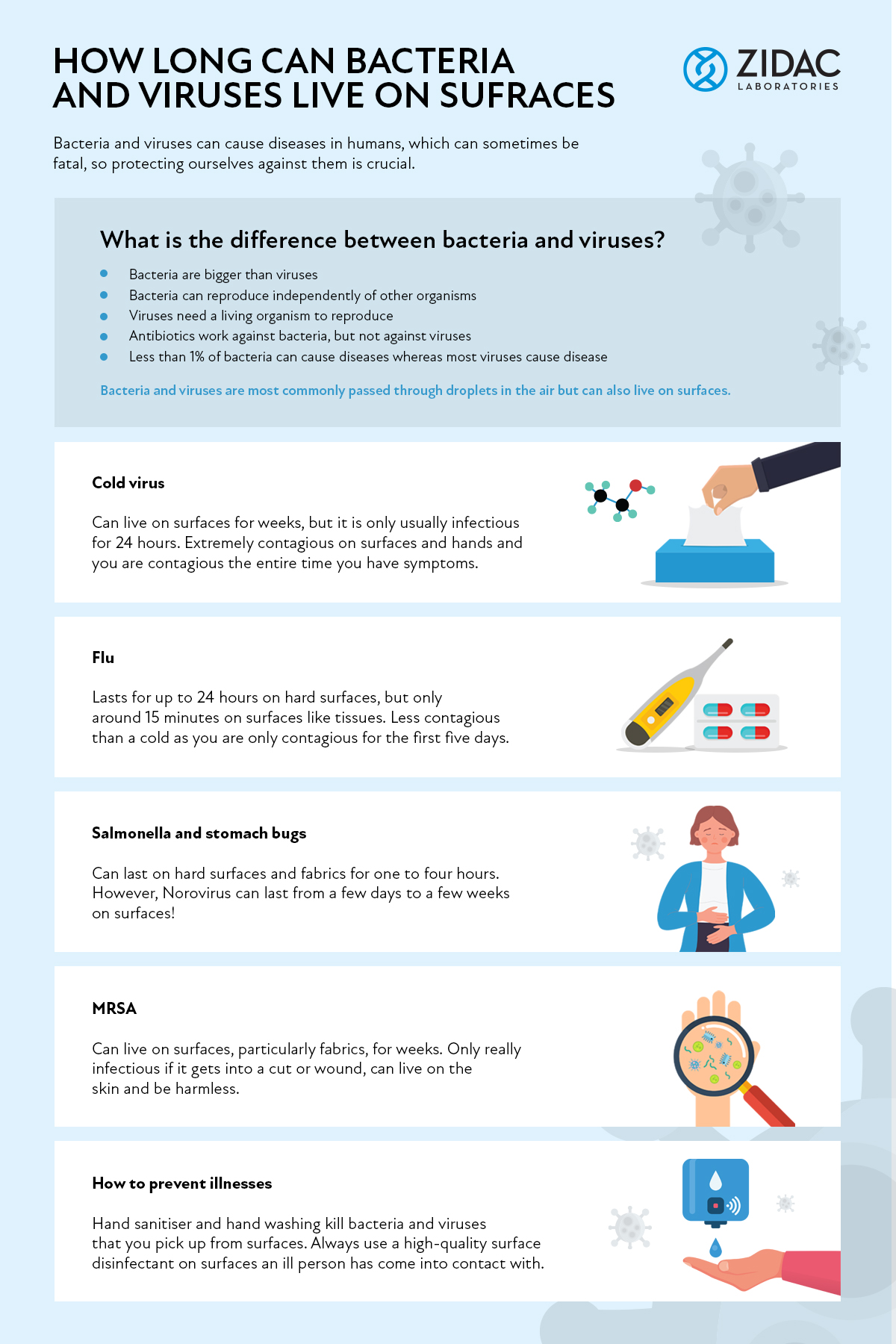How Long Can Bacteria And Viruses Live on Surfaces?

Bacteria and viruses can cause diseases in humans, which can sometimes be fatal, so protecting ourselves against them is crucial.
What is the difference between bacteria and virus?
- Bacteria are bigger than viruses
- Bacteria can reproduce independently of other organisms
- Viruses need a living organism to reproduce
- Antibiotics work against bacteria, but not against viruses
- Less than 1% of bacteria can cause diseases whereas most viruses cause disease
Bacteria and viruses are most commonly passed through droplets in the air but can also live on surfaces.
Types of bacteria and viruses and how long they can live on a surface
Cold virus
Can live on surfaces for weeks, but it is only usually infectious for 24 hours.
Extremely contagious on surfaces and hands and you are contagious the entire time you have symptoms.
Flu
Lasts for up to 24 hours on hard surfaces, but only around 15 minutes on surfaces like tissues.
Less contagious than a cold as you are only contagious for the first five days.
Salmonella and stomach bugs
Can last on hard surfaces and fabrics for one to four hours.
However, Norovirus can last from a few days to a few weeks on surfaces!
MRSA
Can live on surfaces, particularly fabrics, for weeks.
Only really infectious if it gets into a cut or wound, can live on the skin and be harmless.
How to prevent illnesses
Hand sanitiser and hand washing is key to killing bacteria and viruses on your hands that you may have picked up from a surface.
When battling illnesses like Norovirus, make sure to use a high-quality surface disinfectant on any area that an ill person has come into contact with.


